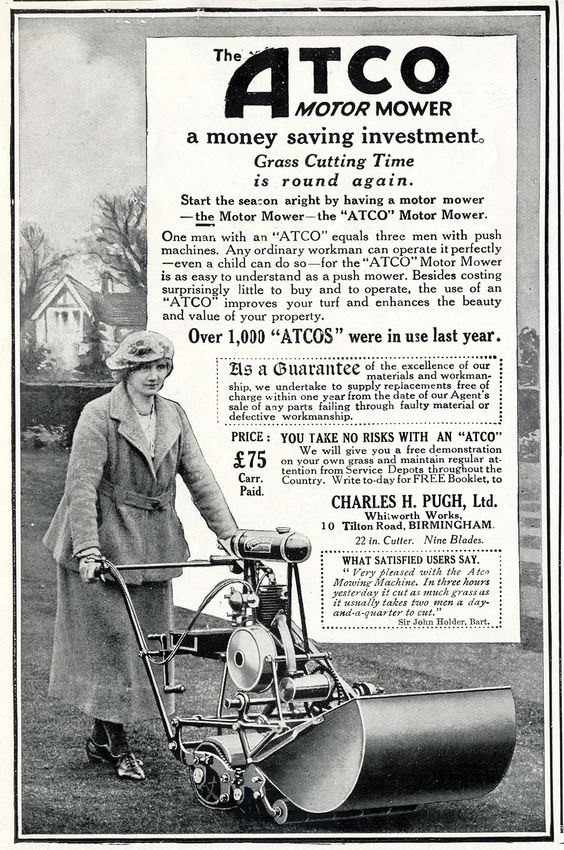Formal lawns, made of short, well maintained grass first appeared in France in the 1700s, and the idea soon spread to England and the rest of the world. Unfortunately the maintenance of these lawns was rather labour intensive and inefficient with labourers using scythes, sickles or shears to hand-cut the grass. Employing scythes-men was expensive, so a trimmed lawn was mainly for the rich and quite a status symbol!
Whilst the lawn has been around for a while as a garden concept the mower is a totally modern invention. The first mechanised lawn mower was invented in 1830 by Edwin Beard Budding, an engineer from Stroud. Initially, Budding had intended the machine to be used for grand estates and sports grounds, however through his invention the lawn, as a garden feature, became popular within the middle classes.
These early machines were all made of cast iron and featured a large rear roller with a cutting cylinder. Cast iron gear wheels transmitted power from the rear roller to the cutting cylinder. So effective was the design that in essence the cylinder mower is still very similar today. Budding’s mower was based on a simple but effective design. A series of linear, gently curving blades fixed to a horizontal cylinder (or reel) passes over a fixed bottom blade. As the mower is pushed forward, the rotation of the rear roller drives a series of gears that spin the cylinder at much increased speed, ensuring a high rate of cuts as the grass is flicked up into its path. The combination of spinning cylinder and rear roller has the added benefit of leaving a natty stripe on the lawn.
By the 1850s, Budding’s early patents had lapsed and other companies were able to introduce their own machines; machines became lighter and quieter with gear or chain drives and grass collection boxes as optional extras. Many of the models produced in this period by companies such as Thomas Green & Son of Leeds, Shanks of Arbroath and Ransomes continued in production well into the 20th century.
Motorised mowers appeared in the 1890s as lightweight petrol engines and up to the First World War Ransome, Sims and Jefferis led the market. The period immediately after World War One saw an unprecedented growth in lawn mower production as people moved to suburban housing with small gardens.
One of the most successful companies to emerge during this period was ATCO and the production of their motor mower launched in 1921 was a huge success. In 1921 they initially produced 900, 22 inch cut machines costing £75.00 each, within five years their annual production had increased to tens of thousands, prices were cut, making them available to the public at an affordable price and a range of different models became available.
Over the years as mower technology has advanced, various innovations have been added. Today there are many factors to consider when buying your lawnmower from the size of your lawn, roller, rotary, petrol, electric, battery, hand propelled or self-propelled, grass collecting or mulching. Speak to your local garden machinery dealer who will be best placed to advise you.


